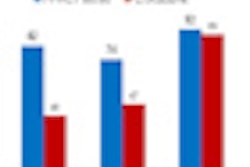
An extensive study of the local population in Singapore has found that the incidence of coronary artery anomalies detected by CT angiography (CTA) is greater than has been reported elsewhere in the medical literature.
Coronary artery anomalies are a potential source of sudden cardiac death, which makes them of great concern. Traditionally, they were diagnosed using invasive coronary catheterization angiography, but the widespread use of noninvasive CTA to define the coronary anatomy appears to have increased the reported prevalence of these anomalies, according to Dr. Tan Swee Yaw, a consultant cardiologist at the National Heart Centre in Singapore.
Researchers from the National Heart Centre assessed imaging studies of consecutive patients conducted between February 2007 and December 2010. The studies were retrospectively screened for anomalies. CTA scans were evaluated by two radiologists or cardiologists with specialist training in cardiac CT. They presented their findings in in a poster presentation at the European Society of Cardiology (ESC) 2011 annual congress in Paris.
The study included a total of 2,056 patients, of whom 52 (2.5%) had anomalous origins of coronary artery disease. For these 52 patients, the right coronary artery (RCA) was the most common cause, accounting for 29 (55.8%) cases, the authors wrote. In most cases, the anomalous RCA coursed interarterially between the aorta and pulmonary artery, a potentially malignant form, with increased risk of sudden cardiac death.
The left circumflex anomalous origins of the coronary artery were the second most common with eight (15.4%) cases, all of which coursed retroaortically. The origin was the left main coronary artery in four (7.7%) patients, one of which coursed interarterially, and another two (3.8%) originated in the left anterior descending (LAD) artery, both of which coursed interarterially. There was one case of RCA duplication.
There were also eight cases of separate origins of left circumflex artery and LAD from the left sinus of Valsalva (absent left main coronary artery). In addition, 14 cases of coronary artery fistulae were identified, with fistulous connection from the right coronary artery/LAD to the pulmonary artery being the most common.
"In agreement with published data, anomalous origin of the coronary artery constitutes the majority of anomalies," the authors stated. "In addition, among anomalous coronary from opposite sinus (ACAOS), anomalous RCA origin from the left sinus of Valsalva is the most common form. In the majority of cases, the anomalous RCA coursed in between the aorta and the pulmonary artery. However, the prevalence of coronary artery anomalies, especially the ACAOS, in our study population appears to be higher than the published data."
Overall, the prevalence of coronary artery anomalies was 3.2%, with the most common being anomalous origins of the coronary artery at 2.5%. The prevalence of coronary artery anomalies in the study appeared to be higher than previously reported, the authors concluded. Further analysis is required to ascertain the source of the difference, they wrote.



















